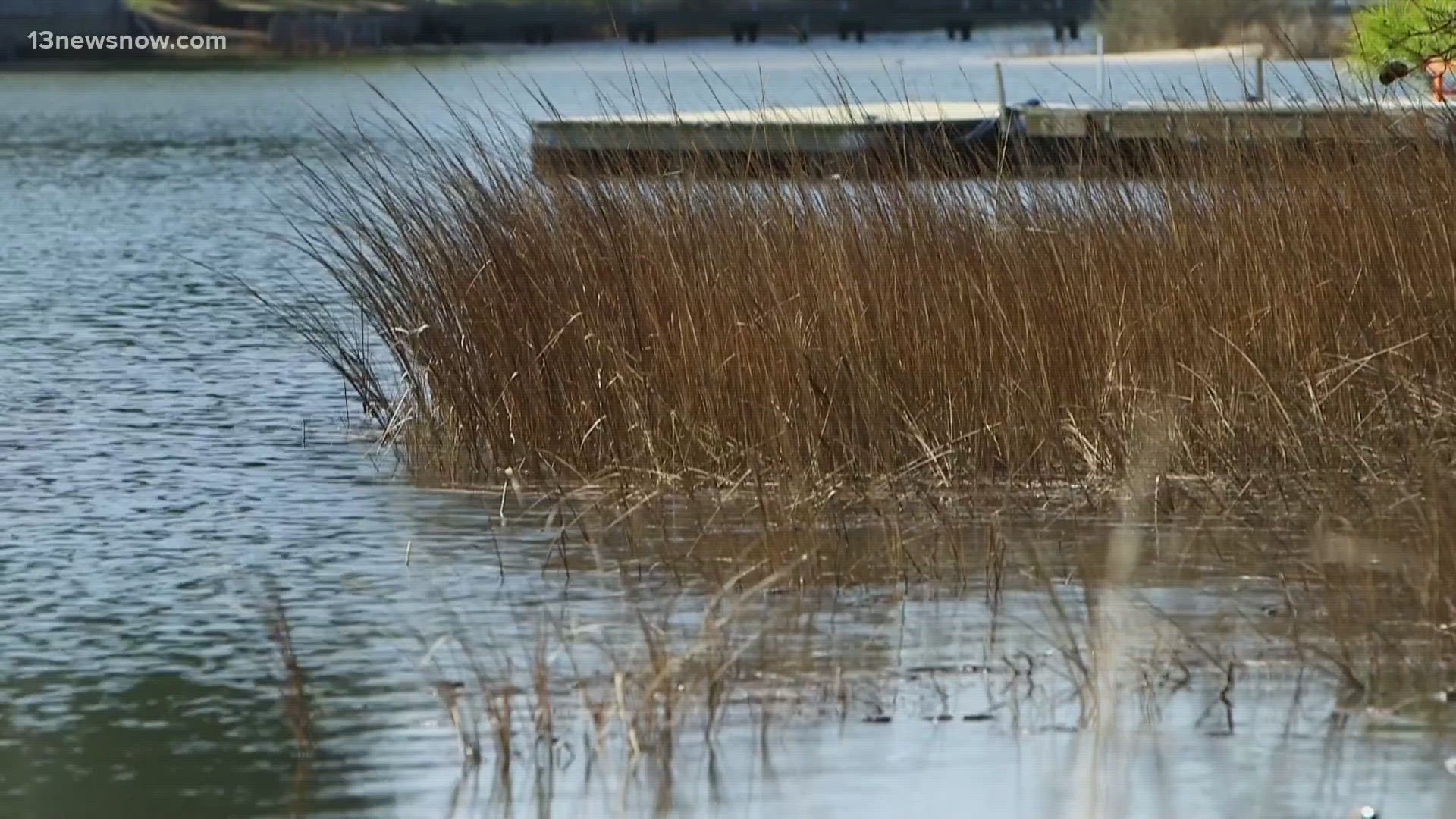NORFOLK, Va. — The balance between roadways and waterways is a trademark of the Hampton Roads region. But keeping that delicate balance healthy requires upkeep.
"Our soil was actually washing away," Luana Hugel said.
A Portsmouth resident, Hugel is one of many private homeowners who are part of a growing environmental movement. She's in the process of installing a home improvement project that has an impact that carries beyond her immediate property line.
"We lost about 15-20 feet of marsh grasses on this side of the property," Hugel said, pointing to the waterside backyard on the Elizabeth River. "We became concerned we were losing it so quickly.”
Hugel's backyard is under drastic reconstruction and is in the beginning stages of installing a "living shoreline."
What is a living shoreline?
Living shorelines are natural, protected coastal edges situated between land and water. Unlike bulkheads and other hard structures, living shorelines can grow over time and provide numerous environmental benefits like pollution reduction, improved water quality, slowed coastal erosion and attracting wildlife.
"We know these projects are filtering stormwater runoff, they’re a more resilient option," said Barbara Gavin, who is the River Star Homes Program Manager for the Elizabeth River Project
According to the National Oceanic and Atmospheric Administration, one square mile of salt marsh stores the carbon equivalent of 76,000 gallons of gas per year.
"We can calculate how much nitrogen phosphorus and sediment projects like this can reduce," Gavin said.
What is interest like for these projects?
More and more people like Hugel are wanting these projects installed on their private properties, according to Gavin.
“Living shorelines have increased in popularity. We’ve done over 70 and that’s just us. There are other organizations doing this kind of work," she said.
According to the permit database with the Virginia Marine and Resources Commission, there are more than 1,200 living shoreline permit requests in Virginia since 2010, but more than half of those came after 2020.
In a 13-year span, the number of permit applications for a living shoreline through the VMRC has increased from only one to almost 200 per year.
Gavin said a major contributing factor to this trend is that living shorelines are now the preferred stabilization methods for coastal edges in Virginia.
"We're seeing a net loss consistently, so whenever we can find an opportunity to find new and existing wetlands we want to seize it," she added.
Barriers and solutions
Still, there are hurdles to making these more commonplace in our communities.
The benefits from living shorelines only come after a permitting process, which may be complicated and difficult to navigate for people just getting into the subject. Projects require permitting approval, consultation, design as well as construction.
Entire projects may cost in the range of tens of thousands of dollars, which may financially put the project out of reach for most families.
However, cost-sharing programs and grant funding through organizations like the Elizabeth River Project are able to cut those prices down -- in some cases like Hugel's to half -- so that it's at least an achievable home improvement for people looking to contribute back to their local environments.
"I really feel like all of us who live along the water, have this moral obligation to care for it as best we can," Hugel said.
NOAA estimates up to one-third of the country’s shoreline will become hardened shorelines by the turn of the next century.

